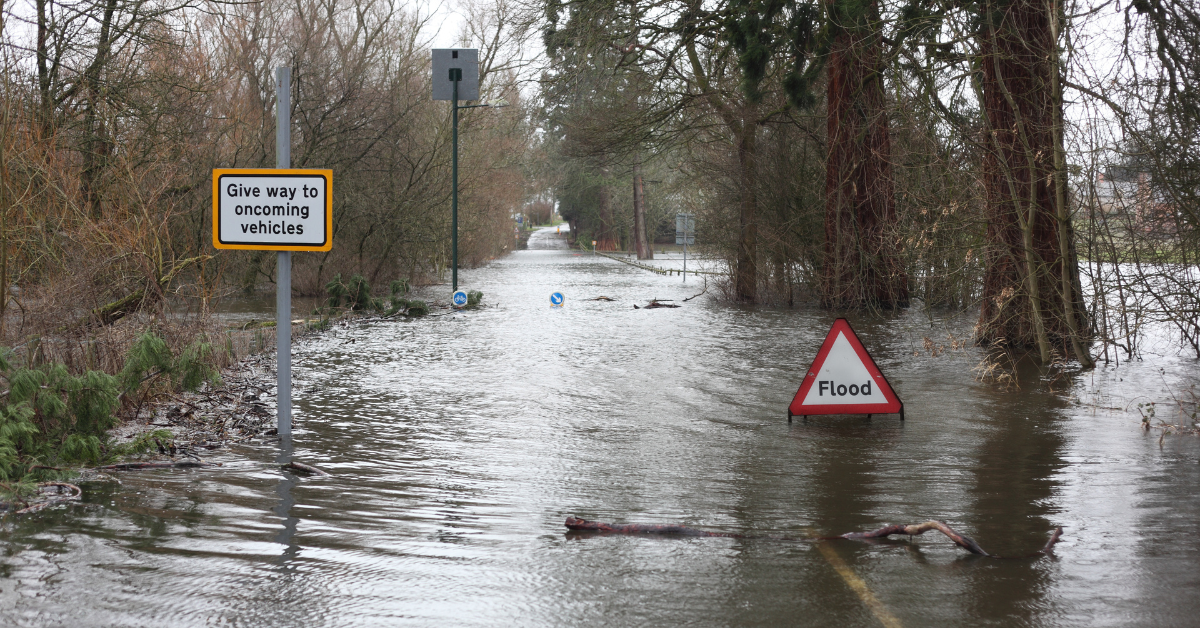
With heavy rain and flood warnings becoming increasingly common, it’s vital for your organisation to stay flood-aware. Fortunately, there are straightforward actions you can take to minimise potential damage. The WRS team recommends the following steps and precautions to help protect your premises effectively.
Are you at risk of flooding?
A nearby river may be an obvious flood risk, but sometimes the risk may be less clear. You can check your situation in a number of ways:
- The Environment Agency (EA – England and Wales) and Scottish Environment Protection Agency (SEPA) offer an online postcode search to see if your local area is at risk
- You can sign up to Flood Warnings Direct from EA to receive warnings by phone, text or email. SEPA offer a similar warning system by phone
- Your Local Authority can tell you what flood prevention schemes are available or are planned in your area.
Specialist advice is available from the National Flood Forum.
Protect your property
If you are at risk, you can take steps to form a barrier against flood water getting into your property. You can:
- Use temporary flood barriers such and sandbags around the buildings themselves and the perimeter where water can get in
- For basic and emergency protection have sandbags or similar alternatives available
- If you have a brick building, fit air brick covers to prevent water from entering the property which can be removed when flood waters have receded
- Fit non-return valves to drainage systems to prevent water from backing up into the property
- Use pump and sump systems to mitigate damage.
Planning for a flood
Making your building more resilient can reduce the impact of water entering and also aid the recovery process. Steps you can take include:
- Raising electrical sockets, fuse boxes, controls and wiring to above likely flood levels. If rewiring, bring cables down the wall to meet the raised socket so the cabling isn’t affected by floodwater.
- Where possible, relocate more vulnerable items to higher levels and try to raise as much as possible above likely flood levels
- Consider more flood-resistant flooring such as concrete with tiles instead of carpet
- Where possible, use plaster, which is more water resistant, on walls or on the part of the wall
- If you can, use floodproof materials such as plastic skirting, stainless steel, solid wood or plastic fixtures or even removable fixture at vulnerable levels.
Recovery after a flood
If the worse happens and you are flooded make sure you:
- Contact 01206 760780 or email hello@wrsinsurance.co.uk. We have a range of specialists who can provide advice on drying out and cleaning up your property and undertaking any repairs or replacements.
- Take photographs of areas or items affected by floodwater
- Be aware – flood water could be contaminated. Approach with caution and use anti-bacterial hand gel if you have to touch the water.
- Open the doors to reduce humidity but ensure the building is secure when closed
- Don’t throw away any damaged items until our claims team say it is ok to do so. We will work with you to get your building back in use as soon as possible
- Make certain any emergency works comply with listed building legislation if appropriate
Bespoke Insurance you can rely on
We’ve been helping charities and churches of all sizes find the best Charity Insurance and Church Buildings Insurance for their needs for over 50 years.
WRS is part of the Benefact Group, a charity-owned, international family of financial services companies that gives all available profits to charity and good causes.